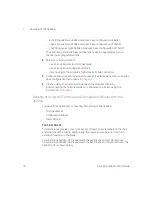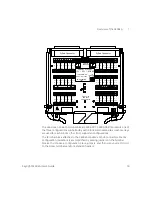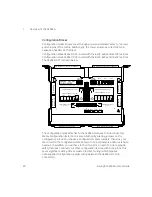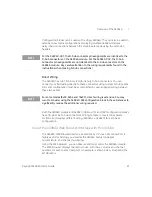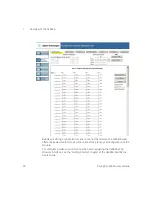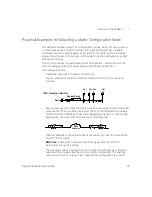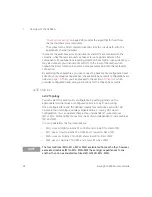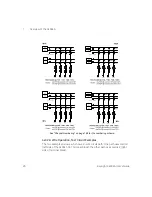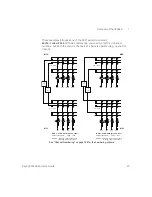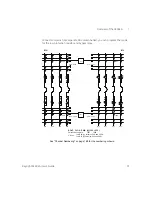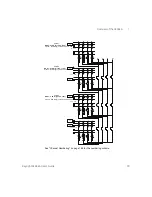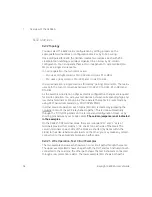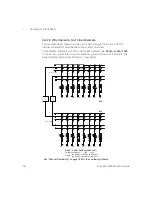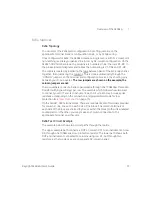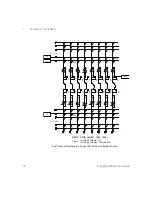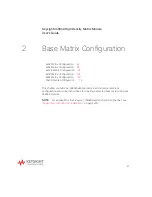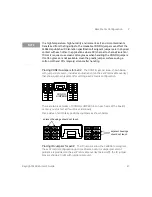
1
Overview of the 34934A
32
Keysight 34934A User’s Guide
4x128 Matrices
4x128 Topology
You can select the 4x128 matrix configuration by setting jumpers on the
appropriate terminal block or configuration block, or by D-Sub wiring.
Once configured for 4x128, the 34934A creates a single matrix, with 512
crosspoint non-latching reed relays organized in a 4-row by 128-column
configuration (greatest number of columns available using a single 34934A
module). On the 34934T-001 terminal block, the columns are numbered 1-128;
the rows R1-R4. In the D-Sub pin assignment tables, the numbering is C1-C128
and R1-R4.
The matrix is created by jumpering the rows on all four of the 4x32 relay banks
together. To do this, you will either place physical “CONFIG” jumpers on a
terminal or configuration block, or create wiring jumpers by shorting pins between
your D-Sub cables. The row jumpers are shown on the example.
Each bank connects to the next through one 100
Ω
Row Protection Resistor (with
Bypass Relay) per row. The examples which follow show multiple ways to connect
your DUT and test instrument; each circuit path
may
include series resistance,
depending on the connection and programmed mode for row protection (see
The 4x128 topology is the longest (in terms of columns) and most narrow (in terms
of rows) of the matrix configurations. It is optimal for applications where a limited
number of instrument connections are required for a large number of signal points
(pins).
4x128 Test Circuit Example
The example below shows three circuit paths through the matrix.
Paths #1 and #3 connect columns on separate 32-column banks, so these paths
each include two 100
Ω
series Row-Protection Resistors with Bypass Relays. No
more than 200
Ω
can occur within any two crosspoints in the matrix. Path #2
shows the instrument and DUT connected within the same 32-column bank, not
including the resistors and relays.

